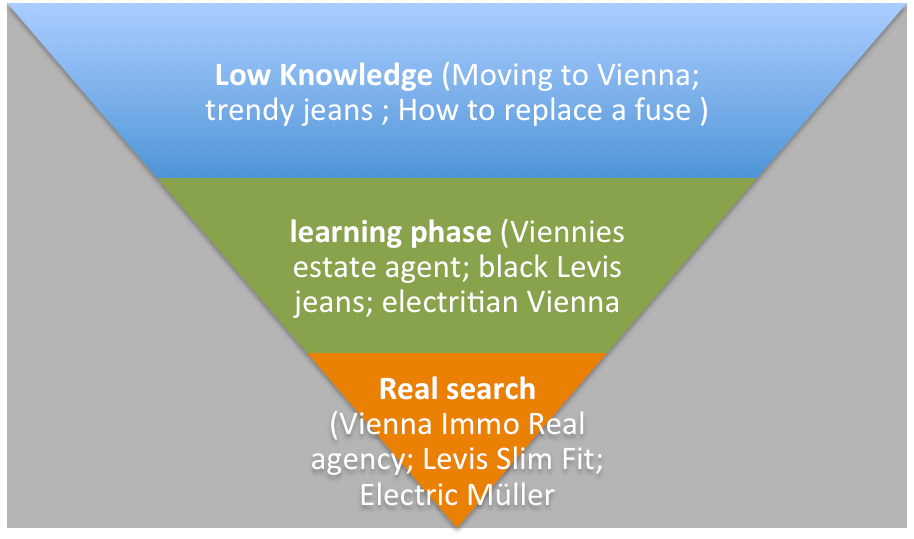Medium and big accounts
First: what is a „big“ account? Out of two reasons, the term „big“ in fact is not as accurate as the term „complex“ would be: On the one hand, accounts dealing with a budget not higher than 10,000€ a month can be complex ones. On the other hand, there are companies, which spend much more money on their Google ads but still rely on a rather simple structure.
Still, why are some accounts in the need of a complex structure while others can go with a simple one? In fact, the only thing that matters is the goal a company wishes to reach with its AdWords campaign. Different companies have different demands for their accounts and they therefore apply different strategies
Understanding the business model
Before starting a campaign, the targets should be set clearly: what is the aim of the campaign? There can be various goals, eg higher profits, higher margins, more newsletter recipients or just making the own brand more popular.
There are campaigns aiming for no other goal than achieving a defined quota, which may have positive influence on other company sectors eg buying at cheaper prices when buying a certain amount of a good. Small profits or even losses are an ignorable side effect to them.
A clear target definition often pre-defines the structure of the account, meaning that the structure follows the company’s business model.
Measurement
Unnecessary to mention, that the goals shall also be measurable. This implies that goals, which are not measurable, should be ignored. A correct understanding of the numbers is of utmost importance for a deep understanding of the account’s performance: Which keywords are performing well? Which price is set for each keyword? How to optimize the ads?
Different models to use for campaign structures
Model 1: Discovery & Managed Campaigns
Unfortunately, it is almost impossible to define all relevant keywords beforehand. The system below is helpful in order to do both, finding new keywords and excluding inept terms. At a discovery Campaign, which is running with low budgets, the keywords are adjusted as largely/modified largely fitting. This results in advertising plans for a variety of terms. Bad performing keywords shall be excluded. Also, high-performing keywords can be excluded and reintegrated into the campaign as “exact match” or “matching” keywords.
This model is not eligible for very big campaigns with some thousand products since it can easily become too complex. Still, it is a perfect strategy for small and medium campaigns.





